Graflex 3A Pano Project
A month or so ago I snagged a 90-year-old Graflex 3A SLR — one on the earliest single lens reflex cameras ever made. I figured that since I’d already converted two 3A folders (Kodak and Ansco), the principle would be the same with the Graflex 3A. While the Kodak and Ansco 3As have served me very well, the great advantages of the Graflex over those are the focal plane shutter (= slap on barrel lenses I already have) and ground glass focusing. Huge advantages — if the shutter actually works. Well, I took a chance and came up a winner. It has a few cosmetic issues — broken strap, peeling leatherette — and the shutter is nowhere near its advertised speeds (about a 75% less, so that the 1/1000 setting is more like 1/250), but completely serviceable:
It came with two decent lenses — a 180mm Zeiss Tessar and a B&L 5×7 Tessar — but you see it here with a 7.75″ Aldis Anastigmat that I almost sold because I never use it on the Speed Graphic. It has found its raison d’être — works very nicely on this camera. Lenses generally have to be in the 6″-8″ focal length range to be practical given the bellows draw and the internal mirror mechanism that blocks the bellows from coming in any closer than 5+”.
The shutter speed is set by a combination of selecting the width of the shutter curtain slit (1/8″, 3/8″, 3/4″, 1-1/2″) and spring tension (1-6), as pictured on the guide attached to the viewing hood:
It’s the spring tension that’s slack and slowing the effective shutter speed on this camera. Here’s a close up of the curtain crank and tension knob:
Now, 3A (122) format film (= 3.25″ x 5.5″) has been out of production for over 40 years, so to use a 3A camera with roll film you can still buy (120), you need spacers for the film roll and take-up roll and it’s advisable for film flatness and straightness to affix a mask and film pressure plate. I went through about six different configurations before settling on sheets of brass screwed into the film frame and thin sheets of styrene on each side to help channel the film. The film pressure plate was first brass, but then I decided on two sheets of styrene, one as a base and the other cut to fit within the film frame against the backing paper. Works pretty well. The resulting mask produces about 58mm x 140mm (=6×14) negatives, a nice big panoramic format. Figuring the size, shape, and thickness of the film pressure took some doing because too tight was scratching the film and too loose was resulting in slightly off-focus. Finally found a sweet spot with this set up:
For the take-up spools I use actual 122 spools with black craft foam wrapped on the ends as spacers (not pictured here). I happened last year upon about 150 old spools (many with original backing paper! 130, 620, 122, etc. — a long story for another day). They work the best, but you need more than one (I have several) if you plan to shoot more than one roll per outing (unless you bring along a changing bag in which to unspool the exposed film to reuse the take-up spool).
The final thing you need to do is to plug up the original frame counter window (again, black craft foam) and convert the “autographic” window into a frame counter window with some rubylith tape (at least two strips thick, but not too many to obscure reading the backing paper). I also put some black craft foam on the sides to cut down the possibility of light leaks:
Of course you then have to calibrate the backing paper numbers to 14cm-wide frames. Kodak film is horrible for this because it only has the frame numbers and “Kodak” written on the backing paper, making it difficult to mark up accurate increments. Fuji, Foma (Arista Ultra), Ilford, and Ultrafine Extreme (= Ilford backing paper) all have a series of 4 dots leading up to the number, so you can mark frames for 5 shots per roll like this:
#1 = first dot after lead-in arrow halfway into inside edge of window; #2 = fourth dot after “2” positioned on outside edge of window; #3 = first dot past “5” positioned halfway into inside edge of window; #4 = fourth dot past “7” positioned on outside edge of window; #5 = first dot after “10” positioned halfway into inside edge of window. Frame spacing is perfect for 5 shots with this sequence. You can also use Rollei film, but it has a series of only 3 dots, so the sequence is different.
The crowning piece to this terrific find is the original case:
Here’s the kit on its first shoot:
I’ve named the camera “Audrey” because of the old-fashioned aura and because I happen to like the name. And instead of paying $1000+ for a panocam of comparable dimensions, Audrey cost me about $125 and is capable of handling some funky old barrel lenses. Hands-down worth the cost and effort to convert. I just need to attend to the cosmetic issues, especially the strap — it would be very convenient to have it fixed. To see some results, check out my Graflex 3A SLR photostream on Flickr.
3 Responses to Graflex 3A Pano Project
Leave a Reply to Jack Harris Cancel reply
Musings & Experiments
- Collodion Bastards and the Indian Connection
- Microtypes
- Figalotypes
- R.B. Graflex Series D Lens Catalog
- The R.B. Graflex Series D Restoration Project
- Worldwide Pinhole Photography Day 2012
- It’s Official: I’m a Large Format Whore
- A New “Book” Project?
- No Longer a Kodak Shareholder
- Kodak Restructures and Brings My Shares Back to Break Even
Latest Flickr Post
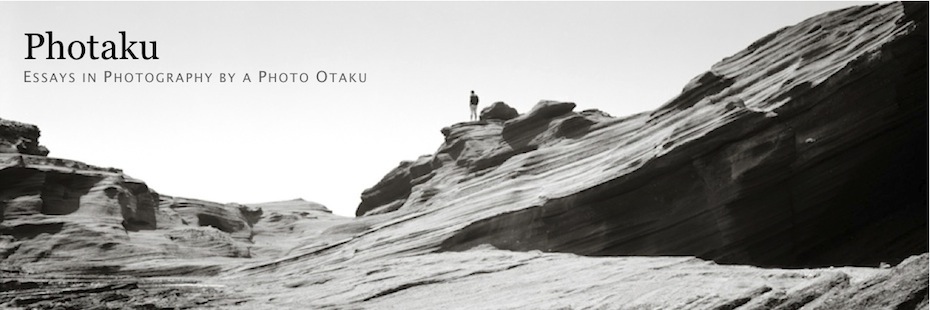
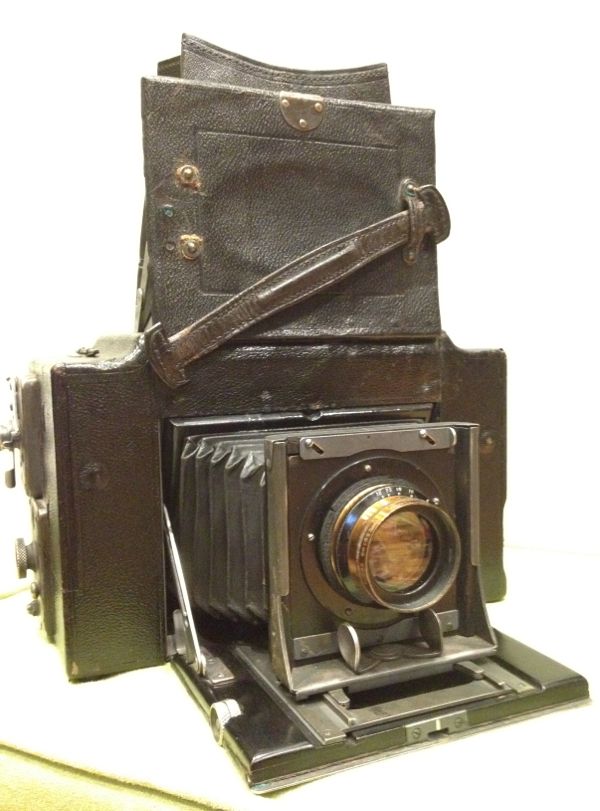
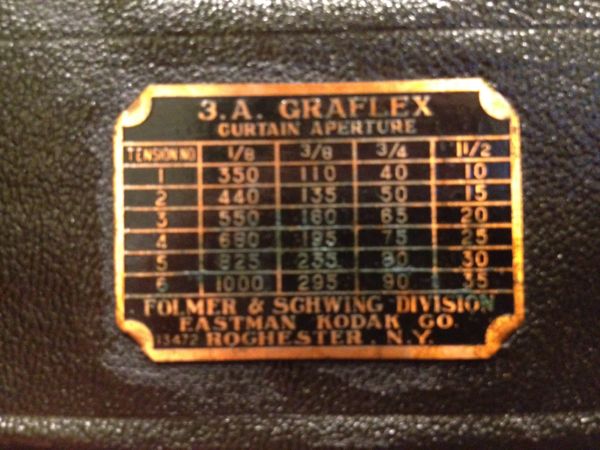
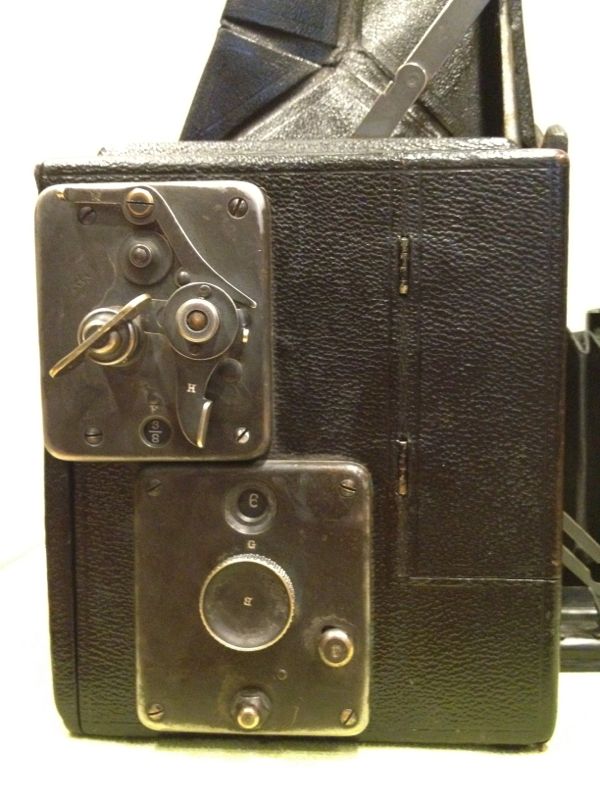
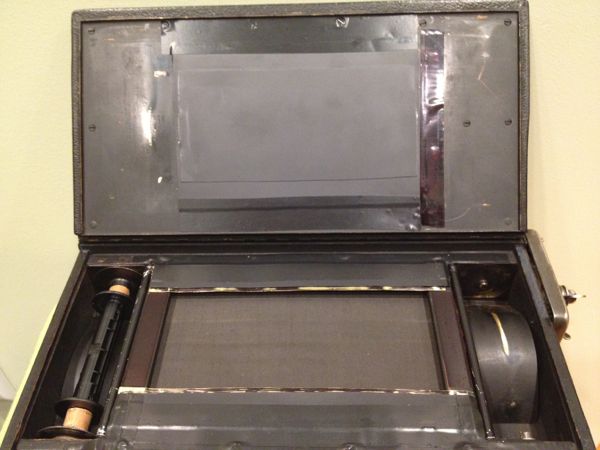
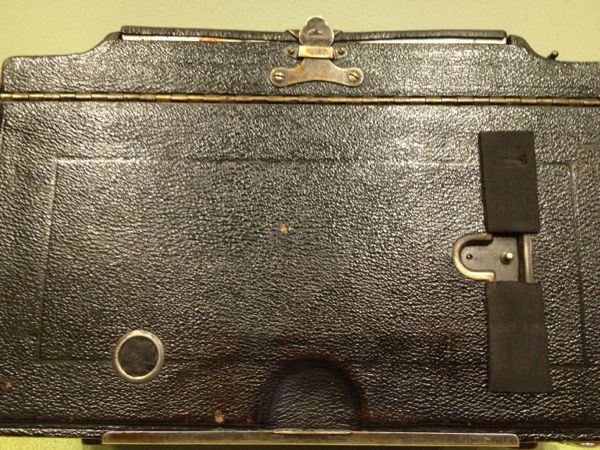
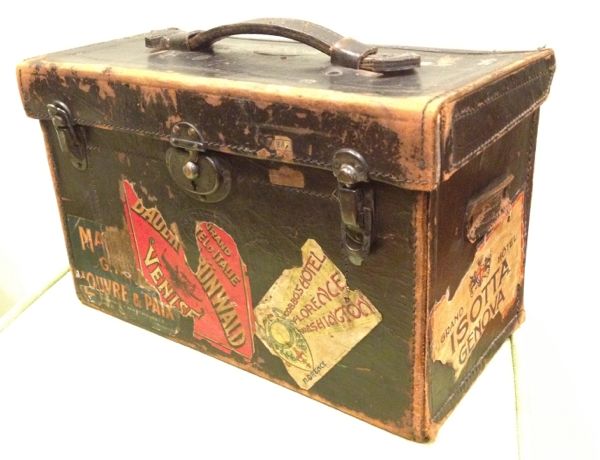
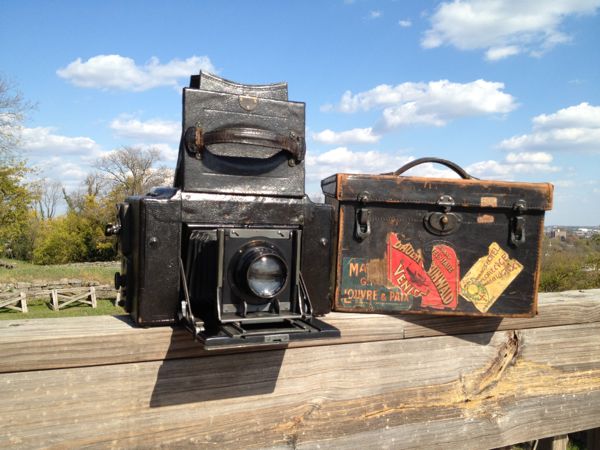





I have just purchased a 3A, then found the shutter curtain is not repairable. Any idea where I could find a replacement? I will be able to shoot with a front mounted Packard shutter, but would really like to find a replacement curtain.
Also, I would really like to have another 122 film spool. Do you have one to spare.
Let me know if and how much.
Jack Harris
Matthews, NC
jhar987@aol.com
Very nice project. I just bought a 3A myself. Yet to receive it in the mail but your project and the resultant images you take encourage me to start taking some photos with some of my vintage cameras. I particularly like the case. Nice find!
Thank you for your styrofoam back idea. I used velcro instead of styrofoam. It works. No more black lines and the spacing between frames is consistent. I got 4 shots out of one roll 120mm film by turning 17 full turns before the first frame. Thereafter 6 full turns between frame after each shot.
Boon
drbcng@gmail.com